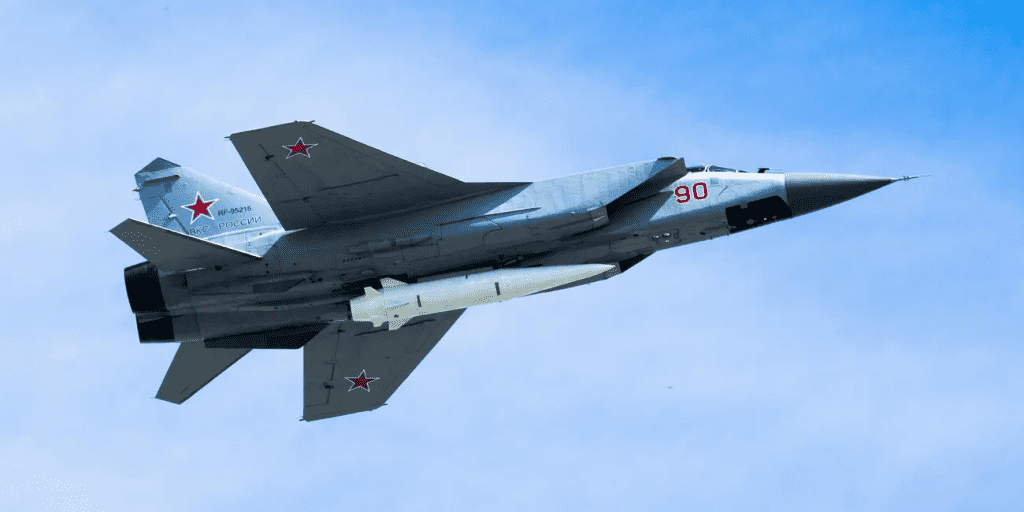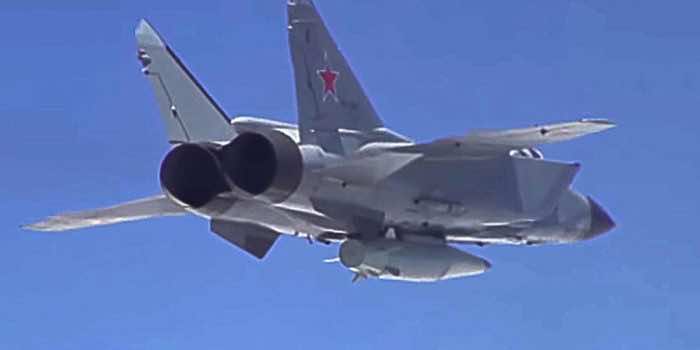In mid-March, as the first month of Russia’s war on Ukraine drew to a close, the country launched its new Kh-47M2 Kinzhal hypersonic missile against a weapons store in Ukraine’s western Ivano-Frankivsk area.
Even though this is the new Russian weapon’s first operational usage, it is hardly the significant occasion it might seem. Despite being hypersonic, Russian Kinzhal is nothing new. However, alleged strike footage appeared shortly after the news.
Despite Kremlin assertions that these weapons are “unstoppable” and unrivalled in the West, Western media has expressed various opinions over the significance of the Kinzhal.
Kinzhal travels at hypersonic speeds, but it is probably not as advanced as the nation says. In contrast to the Kinzhal, an air-launched ballistic missile, modern hypersonic weapons are either hypersonic glide vehicles or hypersonic cruise missiles, which are both being developed by China, Russia, and the United States.
“Russia’s designation of the Kinzhal as a ‘hypersonic’ missile is somewhat misleading, as nearly all ballistic missiles reach hypersonic speeds… at some point during their flight,” the Center for Strategic and International Studies noted.

Furthermore, the employment of the Kinzhal was “likely intended to detract from a lack of progress in Russia’s ground battle” and “unlikely to materially impact the outcome of Russia’s operation” in Ukraine, according to the United Kingdom’s Ministry of Defense.
Analysts believe the Kinzhal is based on the 9K720 Iskander-M short-range ballistic missile launched from the ground. Without leaving the atmosphere, these weapons achieve hypersonic speeds via a “quasi-ballistic,” unpredictable flight trajectory. The key distinction between the Kinzhal and its alleged forerunner is that the Kinzhal is launched from the air rather than the ground, making it less predictable and potentially more survivable than the Iskander ground system.
Also, some experts suggest that the Kinzhal system’s destructive capacity will make it more effective at destroying underground storage facilities. Other Western observers have speculated that Russia may be out of Iskander short-range ballistic missiles and instead employ the Kinzhal.
Others argue that the Kinzhal use may have little or no strategic reason. Instead, it could be a marketing ploy to increase Russia’s overseas military sales by misrepresenting the missile’s capabilities and highlighting Russia’s military superiority.

Finally, some experts believe that the two Kinzhal assaults on Ukraine had different goals: the first appeared to be a simple military operation to locate underground weapons storage facilities, while the second might have been a test of the new system in a real-world setting.
Even though the Kinzhal is a deadly weapon, most analysts think it isn’t all that different from other weapons that have been around for a while. Therefore, its “hypersonic” designation seems insignificant in this situation.

But let’s not forget that the Ukraine war is now at the centre of the evolving world order. It is pertinent to mention that the US, the majority of European nations and NATO have all put their weight behind Ukraine. With the deployment of Kinzhal, Russia has given the world powers a clear message of what is to come regarding Russian aggression, dedication to the entire war in Ukraine, and a long-term strategic stance.


